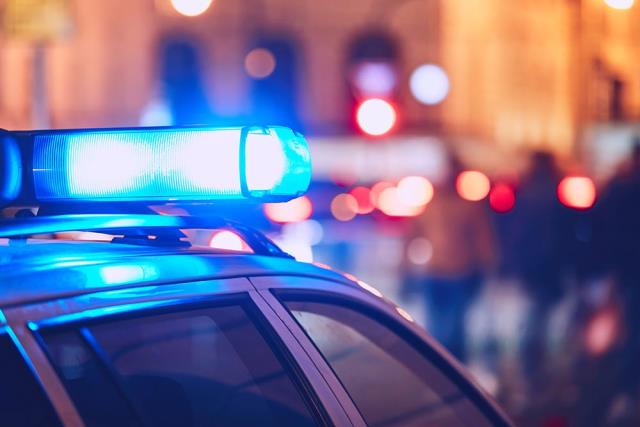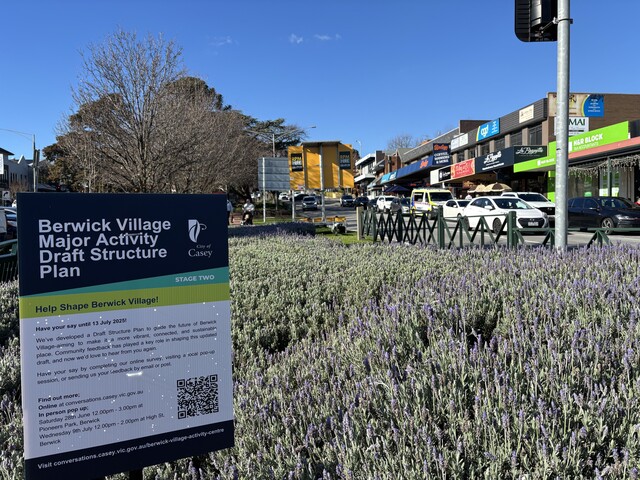Furious Casey communities are objecting to a planning application that would see a waste transfer station next to the controversial Hallam Road Landfill, and have voiced accompanying concerns about fire risks, midnight noise, and increased traffic, dust, and odour.
In July 2023, Casey Council endorsed a new Hampton Park Hill Development Plan that would facilitate future waste and resource recovery activities in the area, including the development of a waste transfer station.
The Draft Development Plan attracted more than 1000 objections in 2022 and residents were vocally against the potential waste transfer station proposed at the site of Hallam Road Landfill by its operator Veolia Australia.
Veolia officially lodged a planning permit application to Casey Council on 29 December 2023 to build a $27m commercial waste transfer station.
In its submitted proposal, the proposed infrastructure is to ‘support waste management needed in the region due to the impending closure of the Hallam Road Landfill’.
Located approximately 250m from the nearest residential dwelling, the new facility would accept about 550,000 tonnes of municipal residual waste, construction and demolition waste, and commercial and industrial waste from Melbourne’s Southeast.
It would recover and recycle some waste streams and transfer residual waste to energy recovery facilities.
Despite a webpage established by Veolia to address community concerns, residents have not been convinced that the neighbourhood would be free from negative environmental impacts by the new facility.
Hampton Park resident Tony O’Hara said his biggest worry was the potential fire risks the station might incur.
According to Veolia, waste will be visually inspected on the tipping floor, consolidated, packed into containers, and loaded into trucks.
The potential fire ‘should be able to be contained within individual containers which help with fire management’.
Mr O’Hara said incorrect disposal of batteries in rubbish bins could easily be responsible for huge fires and it was too hard to put the fire out inside a closed vehicle.
“They [Veolia] get the waste. They compact it, and they put it in a squashed format inside the bigger trucks. It’s a squashing process, which is the biggest danger,” he said.
“You break open batteries, and you can cause sparks and cause violence.
“Now if it’s a normal fire of materials, it may not be so bad, but when batteries are involved, they seem to be able to generate still fire even with very minimal oxygen.”
Mr O’Hara did not believe Veolia’s visual inspection of waste would be sufficient to pick out all the batteries.
“If someone shows a laptop in there, they will see a laptop. They may see a phone, but they won’t necessarily see all the batteries,” he said.
“It would cause big damage for the community if there was a big fire.”
Australian Council of Recycling (ACOR) issued a paper on the battery crisis last year, stating that fires caused by batteries were widespread across material recycling facilities, in trucks, and depots, which echoed Mr O’Hara’s concern.
“Over the past year, there were over 1000 battery-related fire incidents reported in the waste and recycling sectors nationwide, amounting to over three a day,” ACOR chief executive officer Suzanne Toumbourou said.
“The cost of these incidents is being borne by the community through rising rates, by councils through truck fires and service disruption, and by the recycling industry in the loss of critical infrastructure and future risk.”
A Facebook post by Hampton Park Fire Brigade revealed ‘way too many fires due to the incorrect disposal of Lithium batteries over the past couple of months’, which added to the community’s concern.
Mr O’Hara also pointed out the noise issues as the station was set to operate from midnight until 6pm Monday to Friday, and midnight until 4pm on Saturday.
“While there won’t be a lot of trucks in the night, there will still be trucks. And that means that people along Hallam Road and in Lynbrook will hear these trucks all the time overnight,” he said.
Resident Troy Van Gorp, who lives 200m away from the current landfill, found Veolia’s writing in the proposal contradictory regarding the traffic, odour, and dust impacts.
Veolia stated that the proposed transfer station was anticipated to ‘generate similar levels of traffic movements to the existing landfill operation with approximately 500 movements in and out of the facility’.
This will involve approximately 200-230 trucks per day delivering waste to the facility.
For every six trucks delivering waste to the facility, a single A-double truck will transport the waste from the facility.
Mr Van Gorp said the number game did not add up.
“A garbage truck is about 10 meters long. An A-double truck is like three times the size of the garbage truck,” he said.
“They’re saying there won’t be an increase in the volume of trucks, but the size of them will be significantly larger. That would definitely add to an increase.”
In response to Veolia’s odour mitigation, Mr Van Gorp said he could not believe what he was reading.
Veolia said that the facility would have a best-practice air extraction system to minimise odour.
Fans will ‘extract air from the building at a rate of 14 times the building volume per hour’.
That will ‘significantly dilute the air that is then extracted through a high stack to maximise dispersal, while not impacting the amenity of the area’.
“We’ve lived for years with the smell from the landfill. It was supposed to stop because the landfill was supposed to be closed, so we were supposed to get open green space,” Mr Van Gorp said.
“The current rules are they need to contain the odour on their landfill site.
“But this is a license to just blow it wherever you want. They’re going to blow it up in the air.”
Mr Van Gorp said the ignorance of physics was obvious.
“We know that what goes up must come down. Where’s this going to come down? Where’s the wind going to blow? Where’s it going to land? What’s it going to land on?” he said.
Mr Van Gorp also challenged Veolia’s claim that they would wash the truck’s wheels to prevent waste material from being transported out of the facility.
He did not foresee wheel washing coming.
“They just want to address everything and whitewash everyone’s concerns,” he said.
“Many other locations are much more suitable for this type of waste management.
“I support waste transfer station. I support sustainability, and I support recycling. I don’t support this type of facility being allowed to be built so close to people’s homes.”
When asked about the community’s concerns, a Veolia spokesperson said the company had drawn on its experience successfully managing transfer stations across Australia to develop a proposal that mitigated potential impacts on the community and provided a state-of-the-art facility to help manage the area’s waste into the future.
“We know the proposed facility is of interest to many and will continue to listen to and consult the community, including a meeting with the community reference group in December 2023, as we work through the planning process over the coming months,” they said.
“The site is identified in the Victorian Government’s Statewide Waste and Resource Recovery Infrastructure Plan (SWRRIP 2018), which recognises the necessity of strategically positioned waste management infrastructure to cater to the needs of a growing city.
“We are committed to following the highest standard of safety and environmental practices to ensure the health of the community, our workers, and the environment.”
Lynbrook Residents Association (LRA) spokesperson Viv Paine said on behalf of the residents of all five suburbs surrounding the landfill, LRA took the firm stand that any new waste transfer station in a densely populated urban area was completely inappropriate on many grounds.
“We owe that to those who live beside the landfill and beyond who have had to endure escaping putrid odour day and night for at least 10 years, not to mention concerns for their children’s long-term health from what those escaping gases might contain,” he said.
He said the community was shocked and disappointed when out of the blue in mid-2022, the council announced a Development Plan that would see a huge new waste transfer station installed.
“Over the years Casey Council promised that once full, the landfill would revert to public open space,” he said.
“Although Veolia’s current permit expires in 2040, the community is entitled to suspect this development would see the life of the landfill extended indefinitely.”
City of Casey chair of administrators Noelene Duff PSM said as a responsible authority, it was the role of the council to consider and decide on a Development Plan in accordance with State Government policy and the provisions of the Casey Planning Scheme.
“Prior to its endorsement, the Hampton Park Hill Development Plan underwent extensive community consultation and was modified to respond to the relevant land use planning matters raised within public submissions,” she said.
“We thank our community for their active role throughout this consultation. It is well understood that members of our community have concerns relating to the existing operations of the landfill.
“While this matter is beyond the scope of the Development Plan, council officers are in regular contact with the EPA regarding local issues including the Hampton Park landfill site with council representatives also attending the community consultative committee for the site to communicate our community’s concerns.”
Casey Council also noted submissions relating to a future waste transfer facility were also beyond the scope of the Development Plan.
An application for a future commercial waste transfer station on-site or land near the landfill operations requires separate planning, building, and EPA assessment, independent of the Development Plan.
Casey’s statutory planning team will take at least 60 days to consider the application. Environmental Protection Authority (EPA) Victoria will assess a Development Licence application by Veolia.
EPA is not presently assessing the licence application and it will seek community feedback about an application via the Engage Victoria website.






